Der Geist is a ghost. Der Fahrer is a driver. Put them together, and you have a terrible phenomenon but the perfect word to describe it. Der Geisterfahrer drives the wrong way on a divided highway, usually at excessive speeds. In Austria, which has collected such statistics, eighty percent of these drivers are male, and the majority are drunk. In any case, der Geisterfahrer appears as a pair of bright white ghostly headlights where no headlights should be. And since the trip of a Geisterfahrer is likely to end in death, it seems appropriate to speak of him as if he’s a ghost already.
The Bostalsee
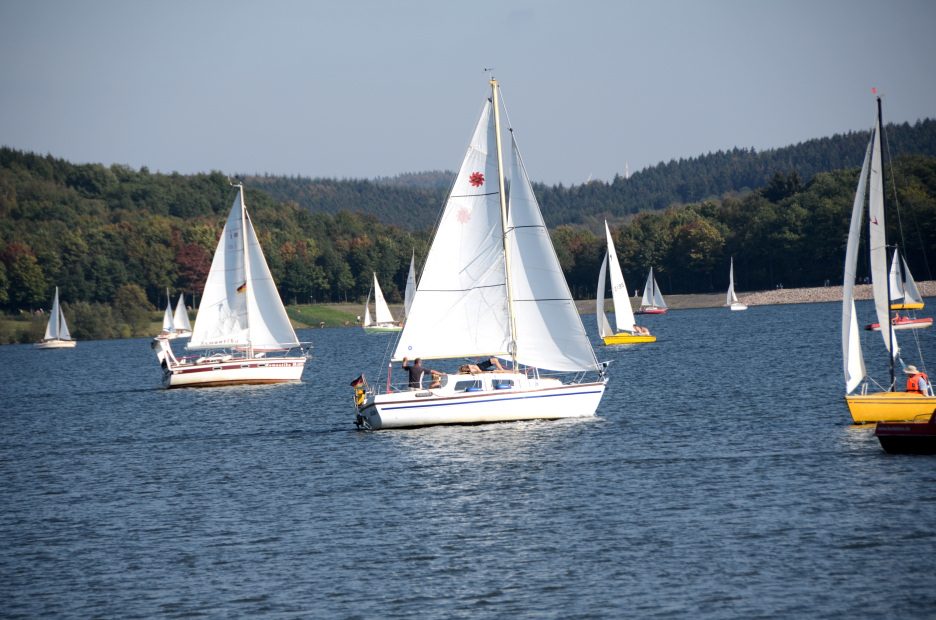
Yesterday, Joe took a half-day holiday. The weather was perfect: 76 degrees F (24 C) and not a cloud in the sky. We wanted to spend it outdoors because the big H on the weather map is drifting south, and that spells the end of Altweibersommer. So we went to the Bostalsee, a lovely little 300-acre lake (120 hectares) in the wooded hills not far from St. Wendel. Sailboats were floating all over it like pretty bath toys.
Yesterday was a real holiday: the Tag der Deutschen Einheit, or Day of German Unity. So the lake was packed with people. Extended families were there, having fun or (in some cases) looking a bit grim, as if the get-together were a mild form of torture. People were walking dogs of every shape and size. My favorite was a cross between a Brittany spaniel and a dachshund. Imagine a floppy-eared, liver-speckled … dachshund. With a big feathery white tail!
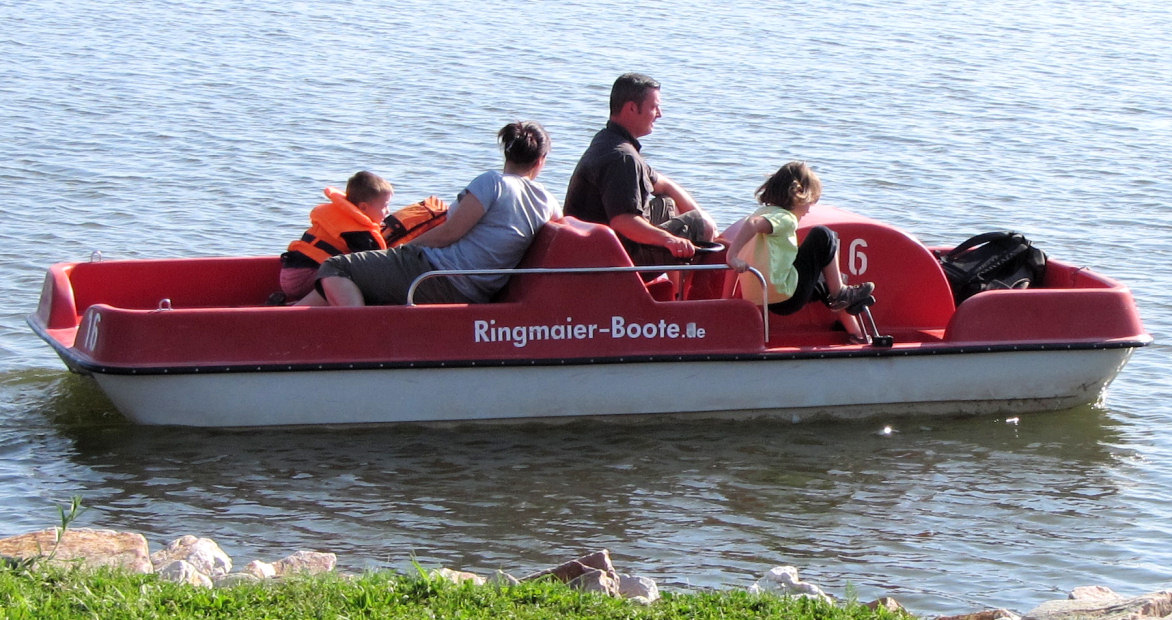
When my girls were younger, we brought them here and sent them out on a paddleboat. The girls are grown, but the paddleboats are still here. I love this photo. Dad is doing nothing but holding the steering wheel and thinking about life. Mom and little brother are watching the scenery go by. The little girl–now, she’s working! Paddling for dear life. Getting them home seems to be her job.
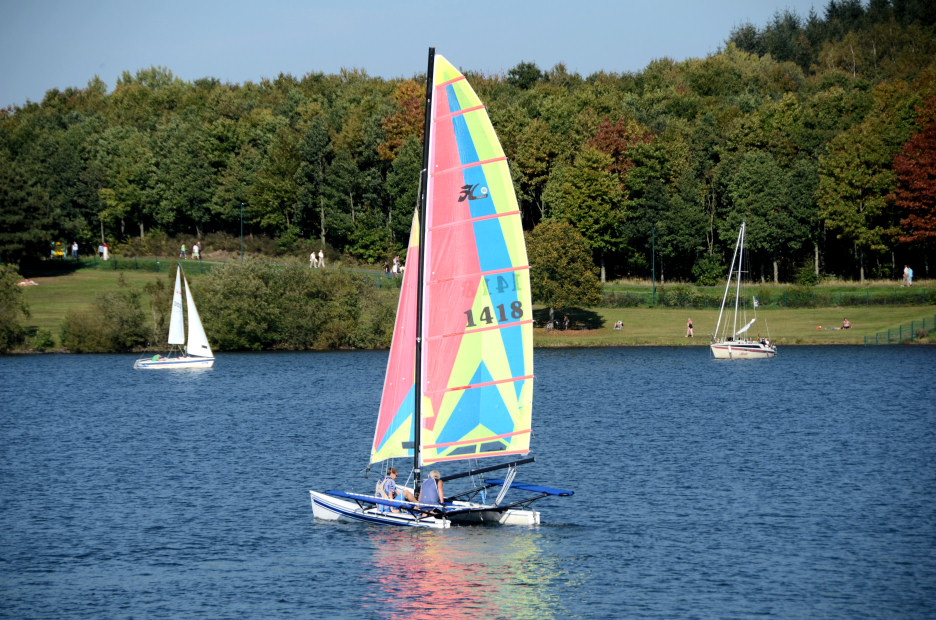
You’ll notice people walking along the shore behind this charming sailboat. Well, that’s what Joe and I did: we followed the example of hundreds of our fellows and walked the shore path around the lake. If you’d asked me, “Hey, do you want to walk four miles,” I might have said no. But once you’ve walked halfway around a lake, you don’t have a whole lot of choice, unless you want to take a shortcut and get your feet wet.
He took the shortcut:
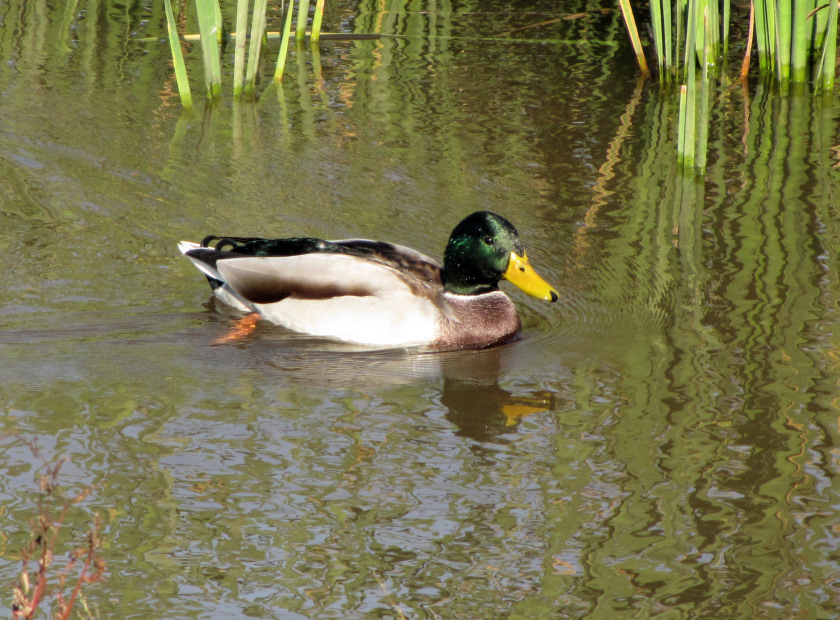
Photos taken October, 2011, on the Bostalsee, Germany. Text copyright 2011 by Clare B. Dunkle. Photos copyright 2011 by Joseph R. Dunkle.
Noch means something like more, but in an adverbial way, as in the expression children hear from their Omas: “Iss noch!“–“Eat something else!” Wieder means again, as in the expression everybody knows even if they don’t know its exact meaning: “Auf Wiedersehen!” — “Until the next meeting, until we see each other again!” And immer means a whole lot of adverbial things like ever or always. Now let’s put them together.
If you continue in the same state, you use immer noch, and it means things are still like they were before. I’m reminded of a reproachful comment from a neighbor who walked by my house at midday and found the shutters down: “Immer noch zu!” — “Still closed!” (This implied that I was still sleeping, or at least a careless housewife.)
But what if the state you’re continuing isn’t constant? What if it’s something that repeats, so that there’s action–rest–action–rest? Then you use immer wieder, and it means that you continue to repeat something–you do it again and again. “So hab’ ich immer wieder gesagt,” grumbled an old man to his wife as he walked past me yesterday. “That’s what I’ve said again and again!”
Leaf Fall
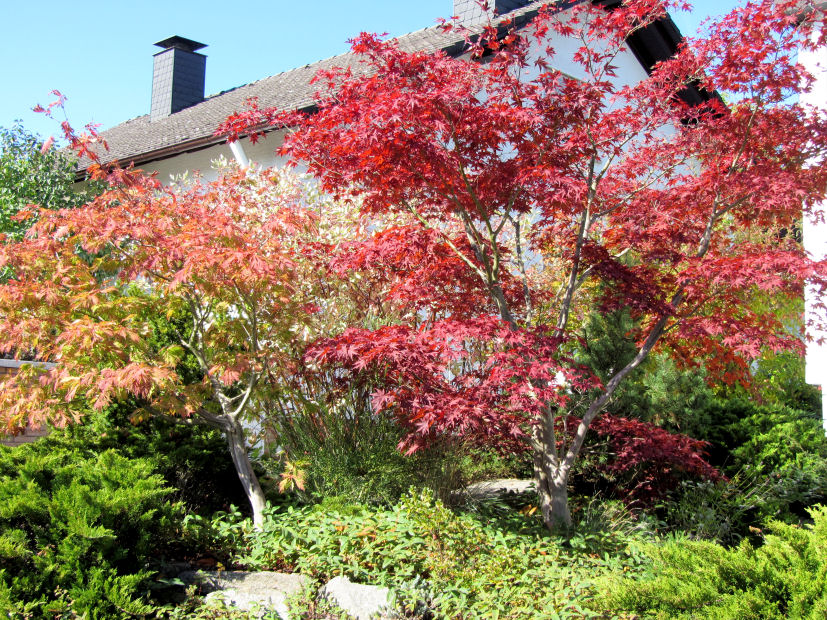
The leaves have started to change in Germany. That’s a very big deal to this Texas girl because where I come from the leaves don’t bother to fall off the trees until spring. We rake live oak leaves from February till April! “Fall color” in San Antonio means the annual change of store window displays from orange and black Halloween kitsch to red and green Christmas kitsch. It makes the heart beat faster, yes, but not necessarily from joy.
But here… Real color. Leaf color! And more is coming!
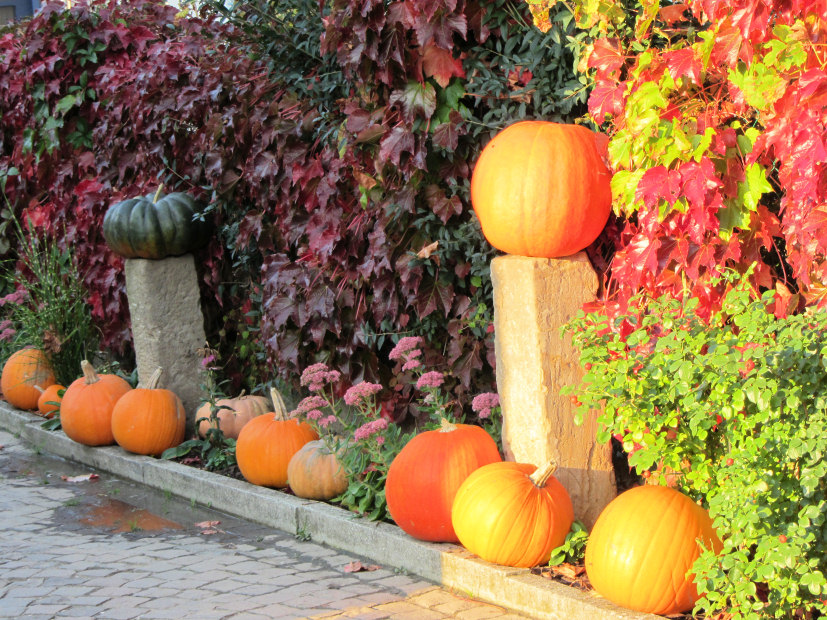
At this time of year, window boxes start to change to autumn displays, and people begin to decorate with colorful gourds and pumpkins. There are pumpkin festivals in the area, too. I just missed the Hitscherhof Pumpkin Farm Festival, which is usually the fourth weekend in September and is lots of fun in a beautiful setting. But we may still go out there for a pumpkin or two–the farm boasts over thirty kinds of gourds.
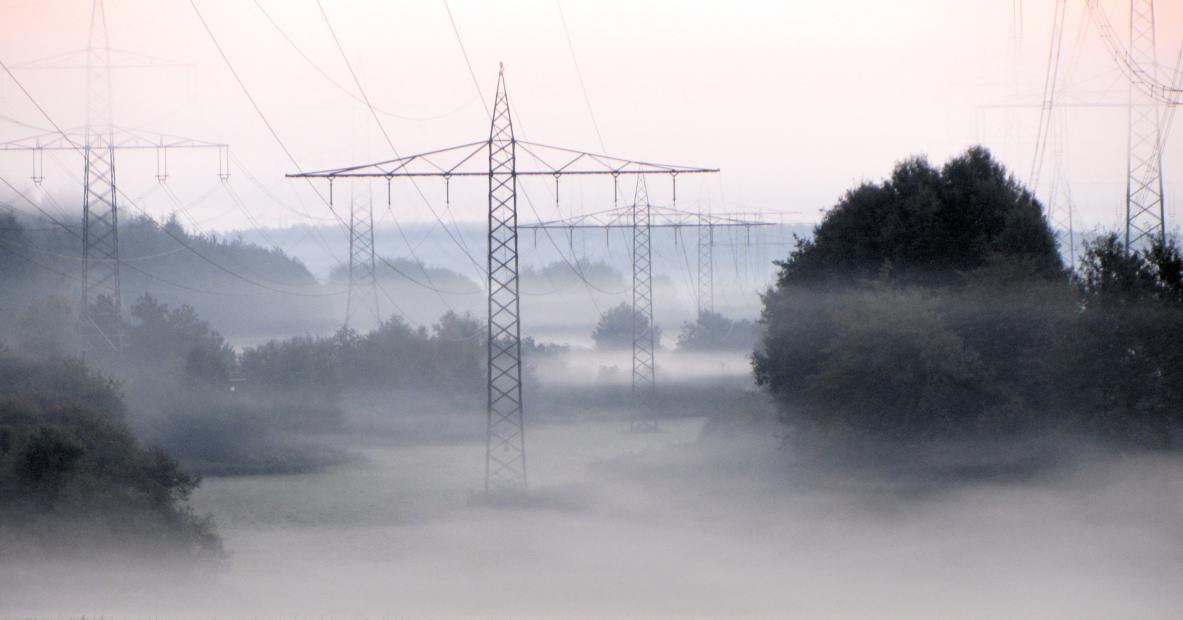
This is also the time of year for morning fog and mist. The most beautiful mist! Knife-thin layers of white gauze float over the fields in the morning. When you drive through them, you feel like an airline pilot. We first arrived in Germany in September, and I remember how astonished we were by this. We thought that maybe it would continue year-round, but it does that only in the river valleys. Driving near the Rhine can get quite depressing, in fact, because a haze can hang over the countryside from morning till night. But the fog near Kaiserslautern is a thing of beauty. In this picture, it makes even the power lines look ghostly and elegant.
Photos taken in September and October, 2011, in locations in the Rineland-Palatinate, Germany. Text and photos copyright 2011 by Clare B. Dunkle.
Last night on Tatort, Inspector Borowski of Kiel had his hands full when eine Leiche showed up in a septic system. Then, not five minutes later, up popped another one, and before the show was over, Inspector Borowski himself had almost become eine Leiche as well. Die Leiche is a corpse or cadaver of a human or an animal. Unlike the picturesque English, Germans do not keep their skeletons in the closet, a charming Halloween expression that wouldn’t work at all well in reality. No, the Germans have eine Leiche im Keller–a corpse in the cellar. That’s a much more practical place to stash a body.
By Bread Alone
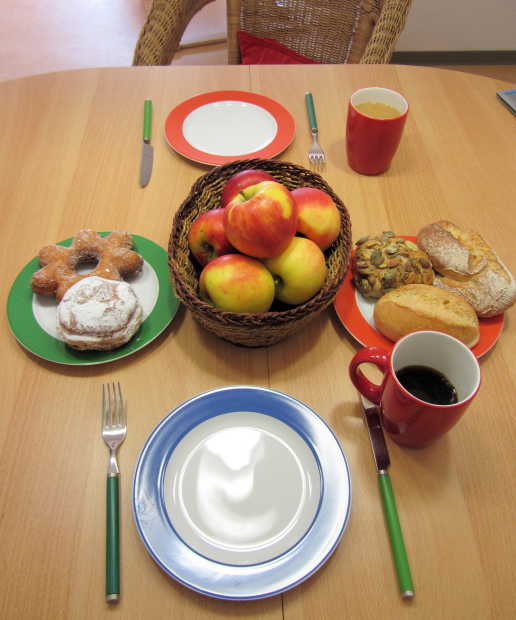
The other day, we asked a man who had lived in Germany for many years what he missed most when he went back to America. Without hesitation, he answered, “The bread.” He was probably thinking of breakfasts like this one, which is what Joe and I had this morning: Pfälzer apples and an assortment of brötchen (buns). We didn’t manage to do in the Berliner, so I’m eating it now and trying not to drip strawberry jam on the keyboard.
Where do you go in Germany for great bread and brötchen? You might try looking on your windowsill first. That’s where our best bread comes from because Rainer leaves it there after his Saturday morning trip to his favorite bakery. If that strategy doesn’t work as well for you as it does for us, don’t worry: German bakeries are everywhere. If your little village doesn’t have its own, you may be on the route of a bakery van. One used to stop at my doorstep several times a week, open up the side, and sell me bread, eggs, and small necessities.
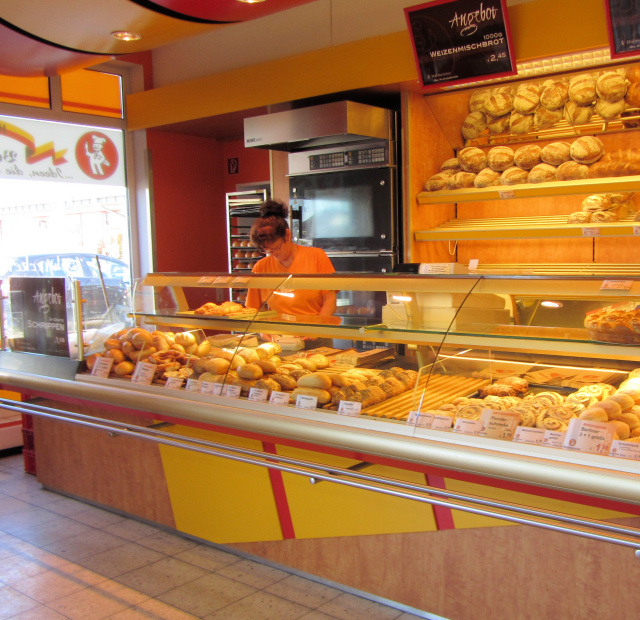
Lots of stores have an independently operated bread counter like this one just inside the door. Not just grocery stores have them, but also home improvement stores or department stores do. And you might look for one of these controversial automated bread machines in your local Aldi Süd store:
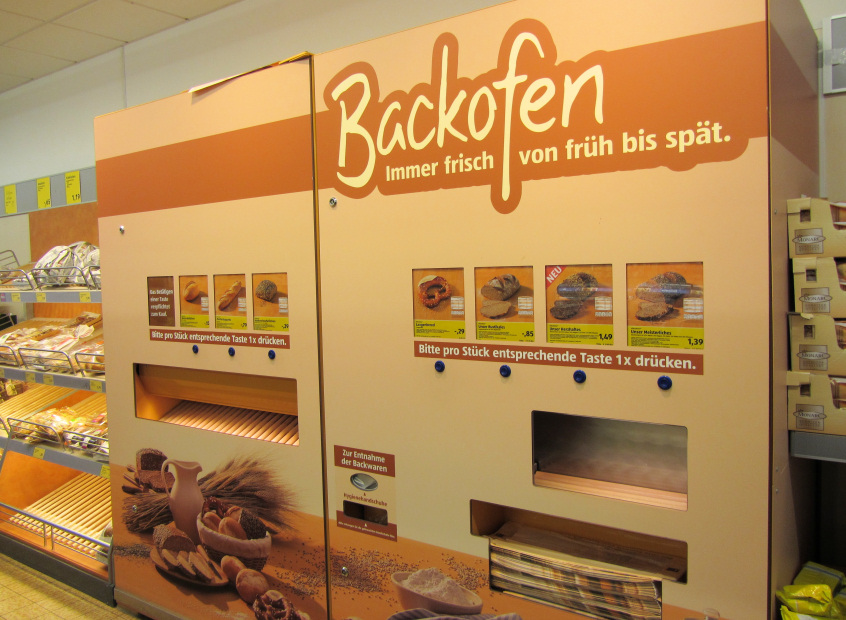
It’s easy to operate. You push a button once for each item of bread you want, and the machine dispenses that item to the shelf below. You then put your items into a bakery bag and take them to the cashier. An outcry from the bakers’ associations claimed that Aldi Süd is misleading its customers by representing this as a “Backofen,” or bakery oven. It’s more like a tanning salon that merely warms the bread. But Joe and I tried it today, and the bread was crispy and delicious. That’s what matters to me.
Photos taken in October, 2011, in Rodenbach and Weilerbach, Germany. Text and photos copyright 2011 by Clare B. Dunkle.
If die Jagd is a hunt, then die Schnitzeljagd is a hunt for schnitzels, right? This makes perfect sense to me–I’m on a hunt for the best Rahmschnitzel (schnitzel in cream sauce) money can buy. But no, that’s not quite what a Schnitzeljagd is. It’s actually a hunt for Schnitzel (snips) or Schnipsel (scraps) of paper. In other words, die Schnitzeljagd is a scavenger hunt.
Zwiebelkuchen
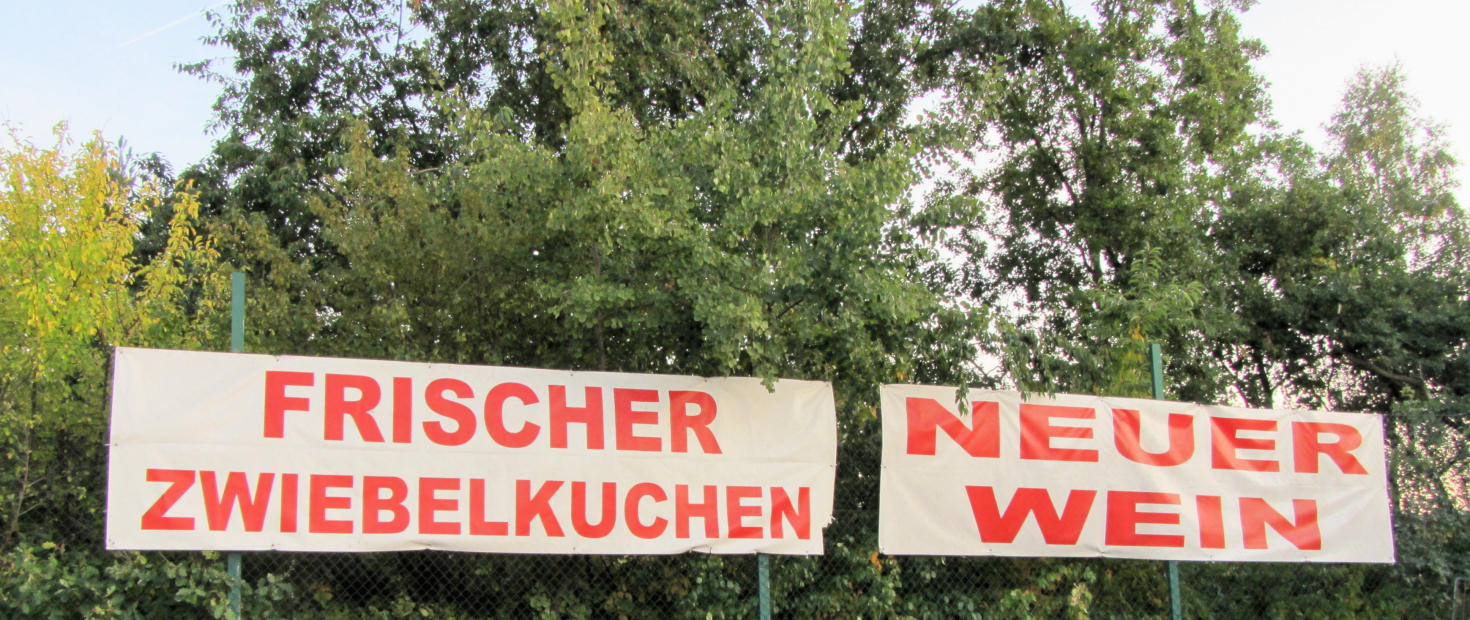
Just like many an American who shops in the German stores close to base, I have been looking at this sign next to the supermarket off the Opel circle for years now, and every time I’ve seen it, I’ve said: Yuck! That’s because I know just enough German to be aware that Kuchen = cake and Zwiebel = onions. Onions on a cake? YUCK!
Then last week, Heidi made me eat a piece of Zwiebelkuchen. And it’s delicious!
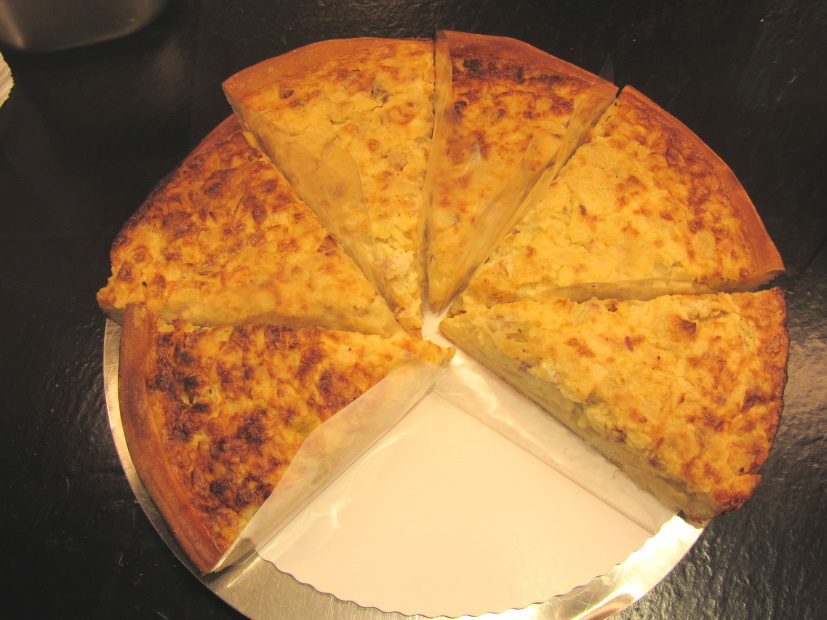
As you can see from this photo, Zwiebelkuchen isn’t a cake at all. It’s a lot closer to being a quiche. There’s a crust on the bottom, but it isn’t a pie crust. It’s made of yeast bread. Then comes the filling of onions, green onions, eggs, cream, and speck, which is German for bacon.
I’m seeing signs for Zwiebelkuchen right now because, as the top photo points out, it’s traditionally eaten with the new wine, also called Federweißer in this part of Germany, where Riesling is one of the dominant grape varieties. Federweißer, as the name suggests, is new white wine, from Feder (feather) and weiß (white). It gets that name because the yeast hangs suspended in the glass and gives it a distinctive look–also a distinctive fizz. It’s very refreshing, but it’s at least four percent alcohol, and heading rapidly higher. As a new wine, it’s not finished changing yet. At this time of year, there are signs everywhere for new wine or Federweißer–many of them hand-lettered. New wine can’t be bottled in an airtight container. It would explode! So it’s usually served right at the winery where it’s being made.
If you’d like to make your own Zwiebelkuchen at home, here’s a recipe. Or you can do what I do: walk into your nearest bakery and look for this! Or ask your German friends where their favorite Zwiebelkuchen comes from. It’ll save you hours in the kitchen.
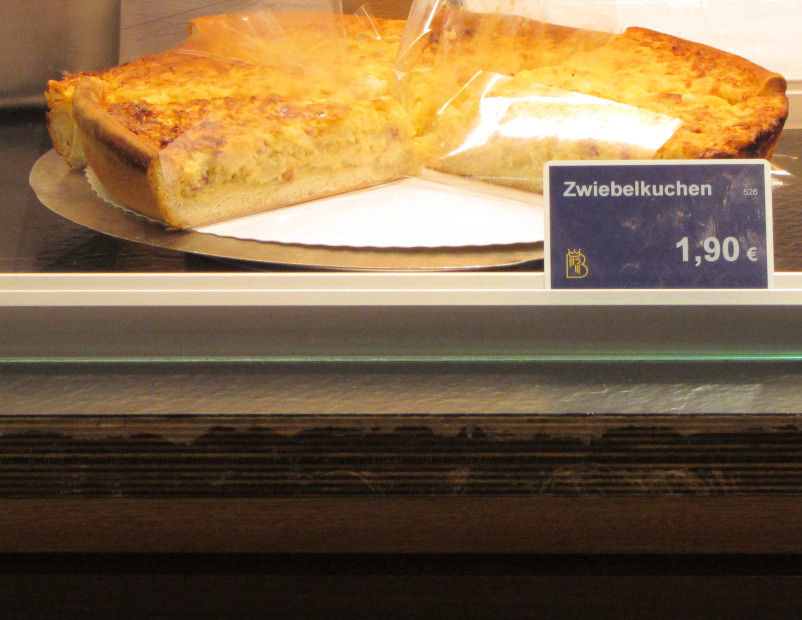
Photos taken September, 2011, in Kaiserslautern, Germany. Text and photos copyright 2011 by Clare B. Dunkle.
The other night, my husband almost ran over an Igel who was out foraging at night. Yesterday, completely by coincidence, my daughter bought an Igel as a pet. What is this mysterious little animal? Here’s a hint: just about every European schoolchild has played with one, but most American schoolchildren haven’t even seen one in a zoo. Der Igel is a hedgehog, a cute nocturnal garden visitor who eats bugs and worms. When frightened, it may roll into a ball and try to protect itself with its spikes. From this, the Germans get another word: sich einigeln, which means to retreat, hide away, or take up a defensive posture–like der Igel, the hedgehog.
Wandering among the Vines
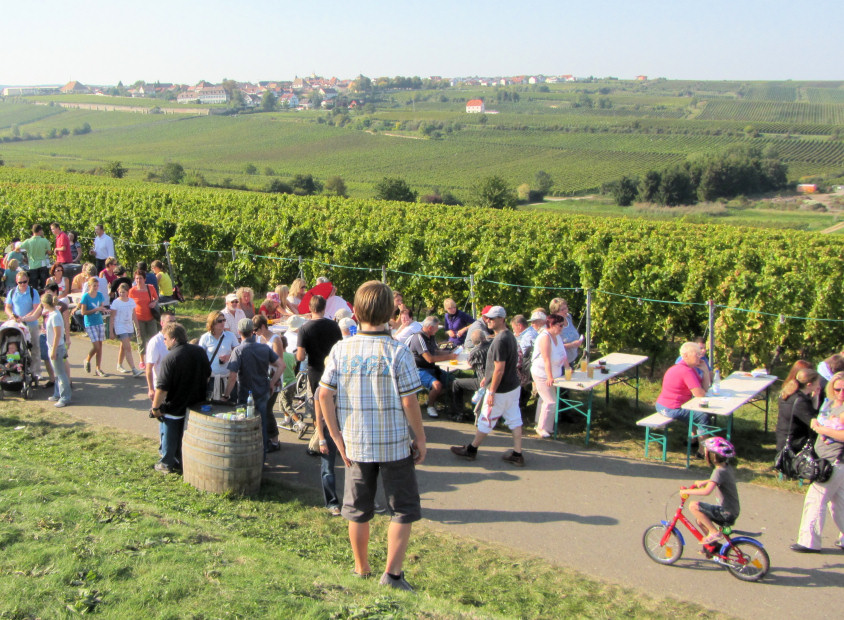
Last weekend, Joe and I visited Freinsheim along with Rainer and Heidi and some of their good friends. Freinsheim is a picturesque little town surrounded by vineyards and orchards just off the Deutsche Weinstrasse, and this was the weekend of their annual Culinary Wine Stroll (Kulinarische Weinwanderung), a chance to ramble among the rows of grapevines, eat more food than is good for anyone, and sample dozens of wines. It was also a chance to listen to live music. One large band was playing “Papa was a Rolling Stone.” I did NOT imagine that I would come to a German wine festival and hear the Temptations. But it sounded great.
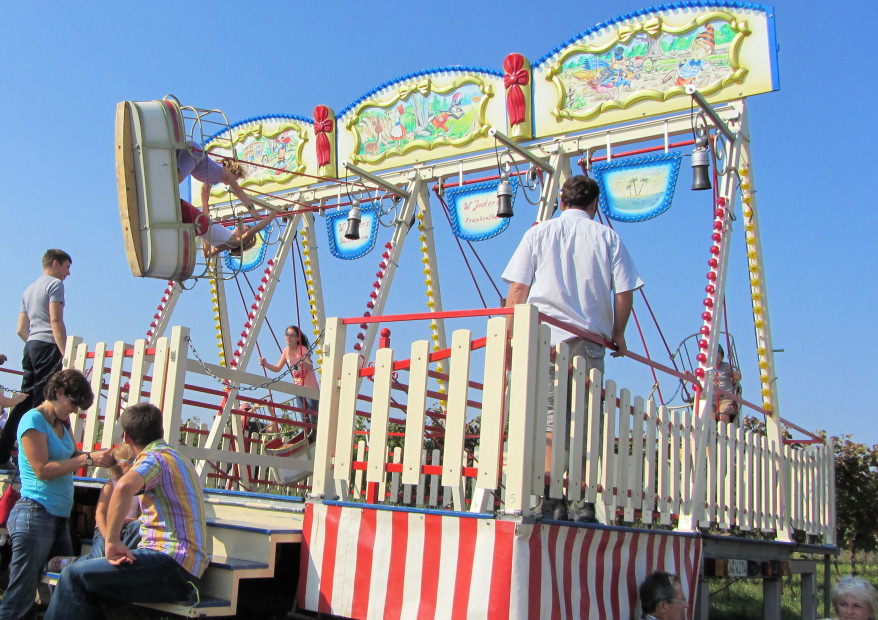
The festival was packed with visitors, all out enjoying the beautiful weather. The children in our party had a great time on this fairground swingset. This is one of those things that German children get to enjoy but our children don’t because those things are solid wood and very, very heavy. We’d run wild, get in the way of a swing, suffer brain damage, and sue for a million bucks.
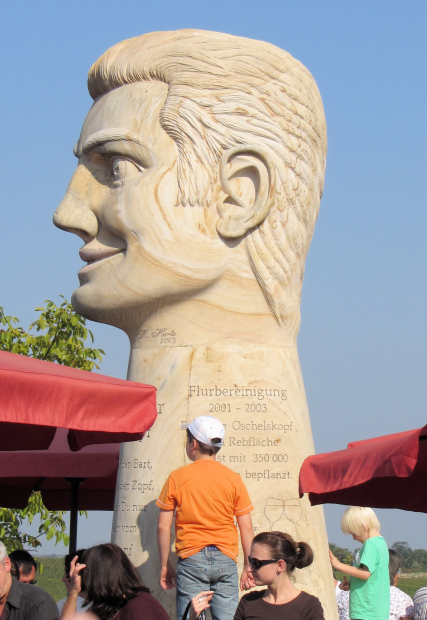
This unusual monument is a visual pun on the name of the vineyard in which it stands, which produces Freinsheimer Oschelskopf wine. (“Kopf” means head.) Apparently, it hasn’t been universally admired because the sculptor chiseled a sprightly little verse onto the back that reads, “If you’d been here earlier, I would have taken your advice on this, but as it is, keep your mouth shut.”
Later, we sat in a beer garden at an old wooden school desk and ate Flammkuchen (Alsatian pizza). The desk looked to me like it came from the 1800’s, but two of our party announced that they had studied at just such a desk. The waiter brought us our Flammkuchen, but only because he said we had been good little students that evening.
Photos taken in September, 2011, near Freinsheim, Germany. Text and photos copyright 2011 by Clare B. Dunkle.
